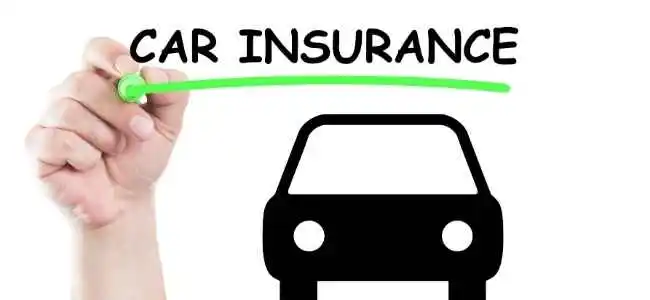Car insurance can be complex with various types of coverage available to meet different needs. One such type is specified perils car insurance. Understanding this type of coverage is crucial for making informed decisions about your car insurance policy.
Understanding Specified Perils Car Insurance
Definition of Specified Perils Car Insurance
Specified perils car insurance, also known as named perils car insurance, covers specific risks that are explicitly listed in the policy. Unlike comprehensive coverage, which covers a wide range of potential risks, specified perils only protects against events that are named in the policy. This type of insurance is often chosen by those looking to reduce their premiums while still protecting against certain risks.
How Specified Perils Car Insurance Works
When you purchase specified perils car insurance, you select from a list of perils provided by the insurance company. These perils are the only events for which you can make a claim. If damage to your vehicle occurs from an event not listed in your policy, you will not be covered. It is important to carefully review and understand the perils covered in your policy.
Benefits of Specified Perils Car Insurance
Cost Savings
One of the main advantages of specified perils car insurance is cost savings. Because this type of coverage is more limited than comprehensive insurance, the premiums are generally lower. This makes it an attractive option for budget-conscious drivers who want to protect their vehicle from specific risks without paying for broad coverage.
Customizable Coverage
Specified perils car insurance allows you to tailor your coverage to your specific needs. You can choose which perils to include based on your driving habits, location, and other factors. This customization ensures that you are only paying for the coverage you need.
Financial Protection
Even though specified perils car insurance does not cover as many risks as comprehensive insurance, it still provides financial protection against the perils that are most relevant to you. This can help you avoid significant out-of-pocket expenses in the event of a covered loss.
What Specified Perils Car Insurance Covers
Commonly Covered Perils
Theft
Theft coverage protects your vehicle if it is stolen. This is a common peril included in specified perils policies, as vehicle theft is a significant concern for many drivers.
Vandalism
Vandalism coverage protects your vehicle against intentional damage caused by others. This can include actions such as keying the car or breaking windows.
Fire
Fire coverage protects your vehicle if it is damaged or destroyed by fire. This can include fires caused by accidents, mechanical failures, or arson.
Weather-Related Damage
Weather-related damage coverage includes protection against events such as hail, lightning, windstorms, and flooding. This is particularly important for drivers in areas prone to severe weather.
Animal Collisions
Animal collision coverage protects your vehicle if it is damaged by a collision with an animal, such as a deer. This is a common peril in rural areas where wildlife is prevalent.
Additional Perils
Depending on the insurance provider, you may have the option to include additional perils in your specified perils policy. These can include events such as falling objects, civil disturbances, or explosion. It is important to review the available options and select the perils that are most relevant to your needs.
Comparing Specified Perils to Other Types of Car Insurance
1. Specified Perils vs Comprehensive Coverage
Scope of Coverage
Comprehensive coverage provides protection against a wide range of risks, including those covered by specified perils policies and many others. Specified perils coverage, on the other hand, is limited to the events explicitly listed in the policy. This means comprehensive coverage offers broader protection but at a higher cost.
Cost
Specified perils car insurance is generally more affordable than comprehensive coverage due to its limited scope. Drivers who are willing to accept the risk of uncovered perils can save money on their premiums by choosing specified perils insurance.
2. Specified Perils vs Collision Coverage
Coverage Differences
Collision coverage protects your vehicle against damage caused by collisions with other vehicles or objects, regardless of fault. It does not cover non-collision events, which are typically included in specified perils or comprehensive policies. Specified perils coverage focuses on non-collision risks, making it complementary to collision coverage rather than a replacement.
Premiums
Collision coverage tends to be more expensive than specified perils coverage because it addresses a more frequent type of claim – vehicle collisions. Drivers who want to balance cost and coverage might opt for both collision and specified perils coverage to protect against a broader range of risks.
3. Specified Perils vs Liability Coverage
Purpose
Liability coverage is mandatory in most states and covers damages or injuries you cause to others in an accident. It does not cover damage to your own vehicle. Specified perils coverage, on the other hand, is optional and focuses on protecting your vehicle from specific risks. These two types of coverage serve different purposes and are both important for comprehensive protection.
Legal Requirements
While liability coverage is legally required, specified perils coverage is optional. Drivers must carry liability insurance to meet state laws, but they can choose to add specified perils coverage based on their needs and budget.
Choosing the Right Coverage
1. Assessing Your Needs
Risk Factors
Consider the risks you face based on your location, driving habits, and vehicle. For example, if you live in an area prone to severe weather, including weather-related perils in your policy may be wise. If vehicle theft is common in your area, theft coverage would be important.
Vehicle Value
The value of your vehicle can influence your decision. Older vehicles or those with lower market value might not warrant the expense of comprehensive coverage, making specified perils a cost-effective choice.
2. Budget Considerations
Premium Costs
Compare the premiums for specified perils, comprehensive, and other types of coverage. Determine what you can afford and balance cost with the level of protection you need.
Deductibles
Consider the deductible amounts for each type of coverage. Higher deductibles can lower your premiums but require you to pay more out-of-pocket in the event of a claim.
3. Policy Customization
Selecting Perils
Choose the perils that are most relevant to your situation. Review the list of available perils from your insurance provider and select those that address your specific concerns.
Adding Riders
Some insurance companies offer riders or endorsements that allow you to customize your policy further. These can include additional coverage options or enhancements to existing coverage.
Making a Claim with Specified Perils Car Insurance
1. Understanding the Claims Process
Reporting a Claim
If you need to make a claim under your specified perils policy, the first step is to report the incident to your insurance company. Provide all necessary details, including the nature of the peril, the extent of the damage, and any supporting documentation.
Assessment and Documentation
Your insurance company will assess the claim, which may involve sending an adjuster to inspect the damage. Ensure you provide all requested documentation, such as photos, police reports, and repair estimates.
2. Claim Approval and Settlement
Approval Process
Once your claim is assessed, the insurance company will determine if it is covered under your specified perils policy. If approved, they will proceed with the settlement process.
Receiving Payment
After approval, you will receive payment for the covered damages, minus any deductible. The payment can be used to repair or replace your vehicle, depending on the extent of the damage.
see also: Why is It Important to Comparing Car Insurance Premiums?
FAQs
1. What is the main advantage of specified perils car insurance?
The main advantage of specified perils car insurance is cost savings. It offers protection against specific risks at a lower premium compared to comprehensive coverage.
2. Can I customize my specified perils car insurance policy?
Yes, you can customize your specified perils policy by selecting the perils that are most relevant to your needs and potentially adding riders or endorsements for additional coverage.
3. How does specified perils car insurance differ from comprehensive coverage?
Specified perils car insurance covers only the risks explicitly listed in the policy, while comprehensive coverage provides broader protection against a wider range of risks, including those covered by specified perils.
4. Is specified perils car insurance required by law?
No, specified perils car insurance is optional. However, liability coverage is legally required in most states, and drivers can choose to add specified perils coverage based on their needs.
5. What should I do if I need to make a claim under my specified perils policy?
If you need to make a claim, report the incident to your insurance company, provide all necessary details and documentation, and follow the claims process as outlined by your insurer.
Conclusion
Specified perils car insurance offers targeted protection against specific risks at a lower cost compared to comprehensive coverage. By understanding what this type of insurance covers and how it works, you can make informed decisions about your car insurance policy. Whether you choose specified perils, comprehensive, or a combination of coverages, it’s important to assess your needs, budget, and risk factors to ensure you have the right protection for your vehicle.





















